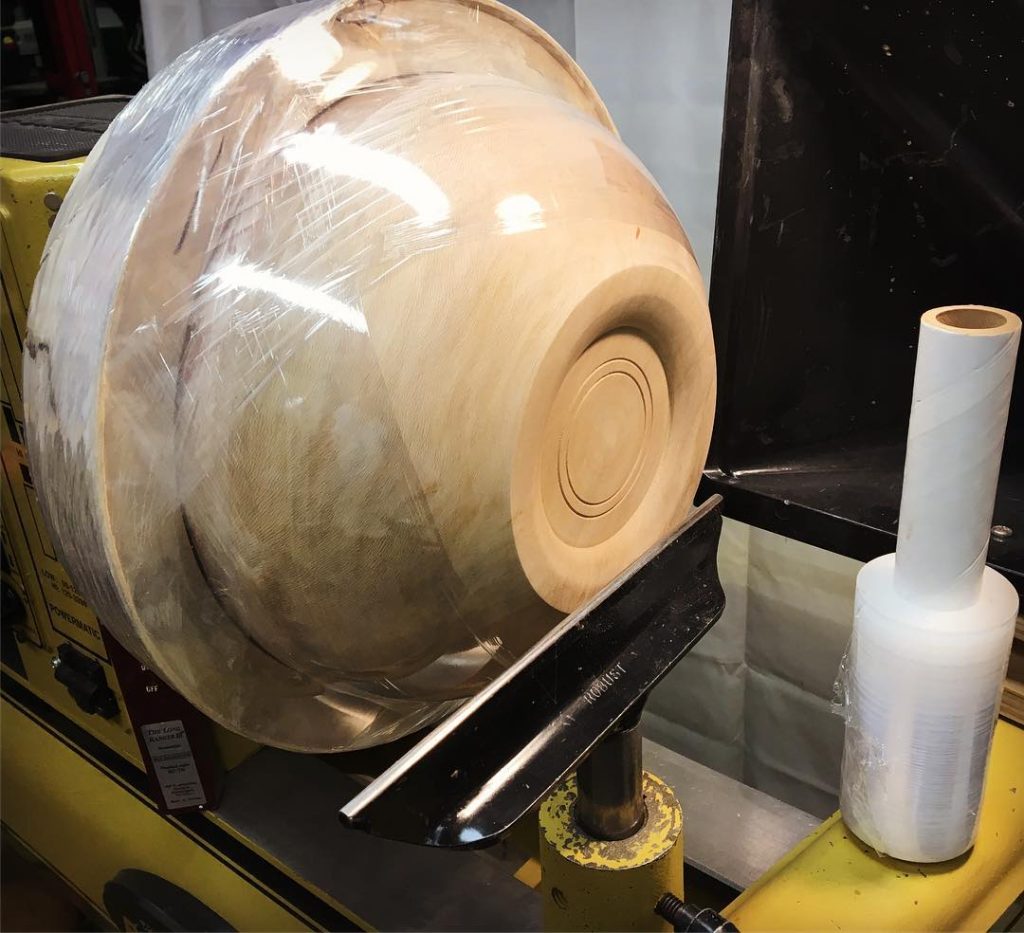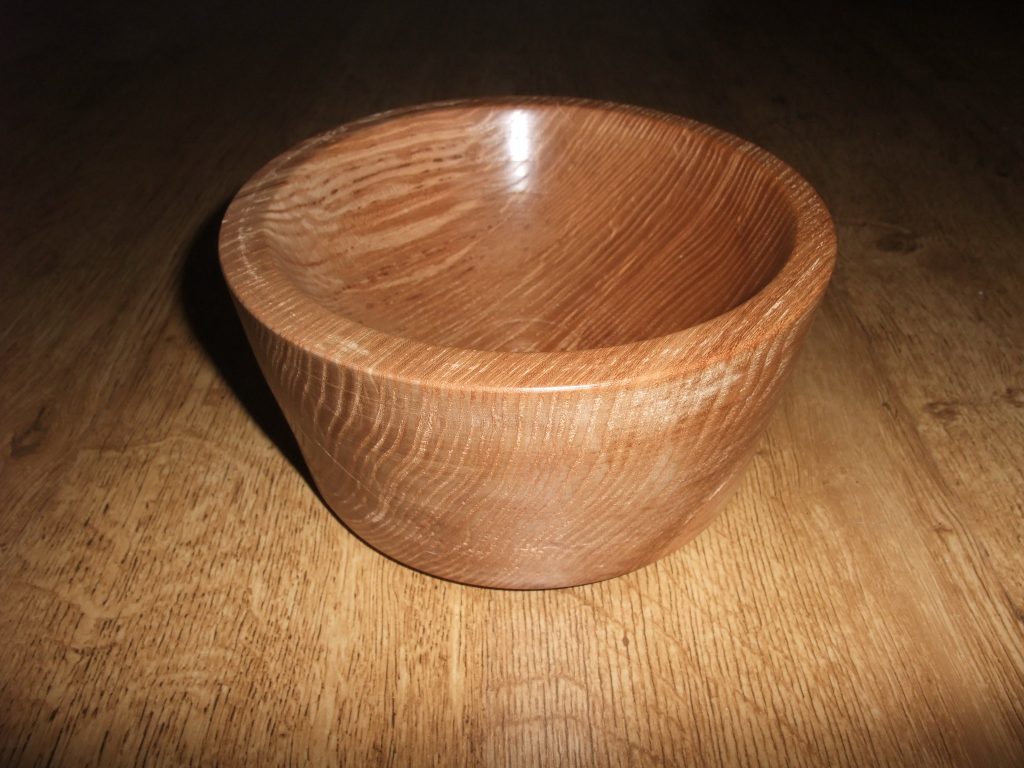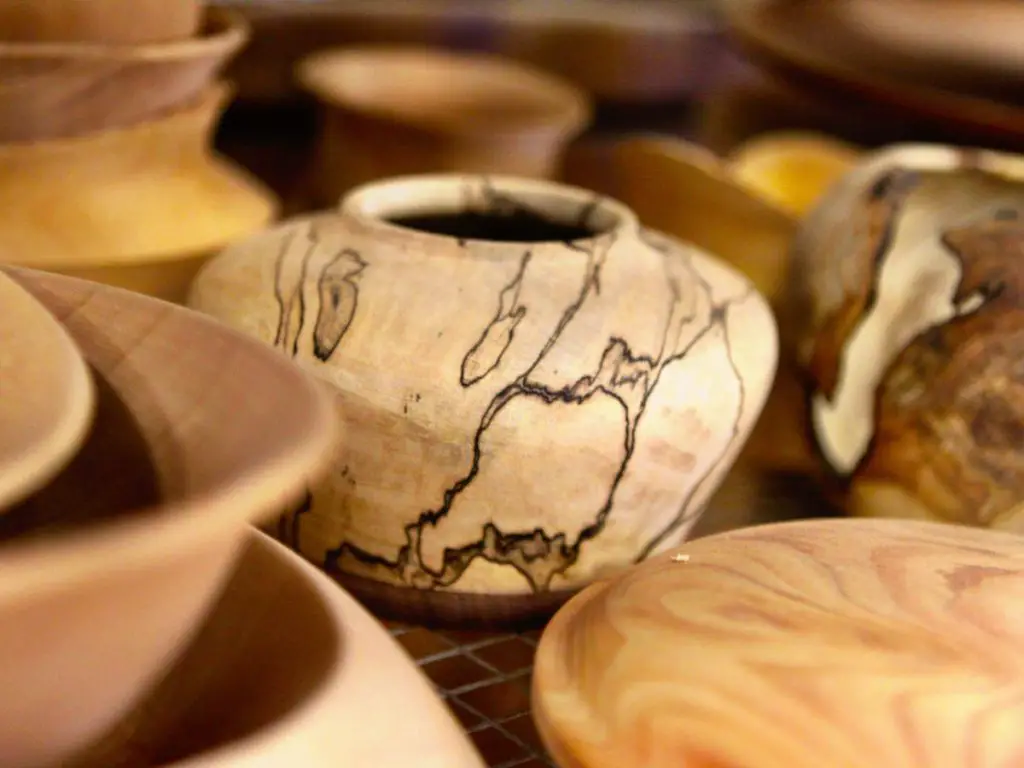Turning a beautiful object out of wood in a short amount of time is one of the activities that draws people to the craft of woodturning. Finishes that beautify and protect the work that the turner has created are popular among turners.
In light of this, we’ve compiled a list of some of our top recommendations for speedy and easy finishes that you can try.
Table of Contents
Types of Homemade Woodturning Finishes
The type of finish you should pick depends on what your project is used for and what type of wood you are using. Some types of homemade woodturning finishes are better suited for indoor furniture, and others are better for outdoor furniture.
In addition, you need to consider the type of wood you are working with and whether it is hard or soft. For instance, a varnish is a good option for making an indoor furniture piece, while hardwood is better suited for outdoor furniture.
When choosing the right finish for your project, remember that all finishes have advantages and disadvantages. Therefore, when picking a finish, you need to consider factors such as the level of protection the finish offers, ease of application, cost, and drying time.

Varnish
A hydrocarbon-based varnish is a good option for making an indoor furniture piece. This type of varnish is commonly used on wood that is already finished, but you can also use it on unfinished wood.
If you are making a woodturning project, you can use a clear or tinted varnish. Compared to other finishes, a varnish offers limited protection. It is easy to apply and dries quickly. Although a varnish offers a water-based finish, it will not be suitable for outdoor furniture.
Shellac
Shellac is a good option if you are making an indoor furniture piece or a piece of decorative artwork, for example, out of exotic lumber. This finish is easy to apply and dries quickly. Clear shellac finish provides a glossy finish, offers good protection, and is water-based.
It is, however, less suitable for outdoor furniture pieces. Shellac is a less durable finish than some of the other options you can choose from. It does not offer as much protection against damage caused by scratches, ultraviolet light, and chemicals.
Wax
Wax is a good option for indoor furniture pieces. It also works well for decorative artwork pieces. Wax provides a glossy finish and good protection and is a water-based finish. It is, however, less suitable for outdoor furniture pieces.
Wax offers less protection against damage caused by scratches, ultraviolet light, and chemicals. Wax also has a less durable finish than some of the other alternatives. Wax may be great for some projects but may not be the best option for others.

Epoxy Coating
Epoxy coating is a good option for making an indoor furniture piece – for example, an epoxy resin river table. This finish is commonly used on wood that is already finished, but you can also use it on unfinished wood. However, it is not the best option if you are making an outdoor furniture piece.
Epoxy coating provides good protection and is a water-based finish. This finish is easy to apply and dries quickly, but it may take a long time to cure fully.
Polyurethane Coating
Polyurethane coating is a good option if you make an indoor furniture piece or a piece of decorative artwork. This finish is also commonly used on wood that is already finished, but you can use it on unfinished wood, as well.
Polyurethane coating protects against water and chemicals but is not suitable for outdoor furniture pieces. This finish is easy to apply and dries quickly, but you need to apply several layers to achieve the level of protection you want.
Blended Oil Finishes
Traditional linseed oil finishes, like clear shellac finish, have been used for a long time. You can create your own by combining an oil-based lacquer, a drying mineral oil including tung or boiling linseed oil, and mineral spirits in equal proportions.
Within 24 hours, mineral oil/varnish mixtures like this one polymerize into a solid, durable covering. They have a strong desire for oxygen, which is required for polymerization. As a result, a bottle of linseed oil finish must be poured into smaller bottles or utilized in a day or two to avoid the combination from curing.
Because the polymerization process produces heat, this finish is potentially combustible if rags are firmly wadded up after usage. So, spread everything out flat until the finish dries, and avoid throwing away wet finish-saturated brushes and wood shavings. A fireproof metal garbage can is a good safety measure if you work with blended linseed oil finishes.
The bowls look beautiful with a linseed oil/varnish finish. It can be used on a bowl of either unseasoned (green) or dried wood. Because it prevents evaporation from the grain of the wood, a harsh green bowl can dry more uniformly and with less checking.

Frequently Asked Questions
What is the best finish for woodturning?
Spindle turnings, bowls, and boxes look fantastic with a clear shellac finish because it has a classic sheen. In addition, it dries very rapidly and does not affect food taste.
Should wooden bowls be oiled?
Keep the bowls in a stale, cool place, and oil them every so often or whenever they start to “feel dry.” Wash them by hand in warm, soapy water, making sure to use a gentle detergent. They must be washed, patted dry, and then given a little oil coating, if necessary. We advise using a blocked oil of high quality and food grade.
Which wood finish is food-safe?
Shellac is a typical film finish that is safe for consumption and is produced from Indian lac bugs. It has very good resistance to and is a water-based finish. Shellac comes in various colors and can be purchased either in liquid state or in flakes that need to be disintegrated in ethanol before they can be applied. During the drying and curing process, the ethanol will evaporate.
Can I use olive oil in a wooden bowl?
Apply it to a brand-new bowl, board, or utensil approximately once every week during the first thirty days after it has been purchased. After that, approximately once a month, depending on how often it is used.
Is coconut oil good for wood?
Coconut oil is an excellent wood conditioner since it keeps the wood pliable, stops it from warping, and reduces the wear and tear that comes from regular use. To begin, wipe the surface of the wooden object with a wet towel or dust cloth. Next, using a clean cloth and a very tiny amount of oil, rub the oil into the surface of the wooden object using circular motions.
Is there a food-safe clear coat?
Coconut oil, beeswax, linseed oil, and mineral oil are a few examples of natural oils that can make clear coatings safe for consumption. Even though these solutions are shiny and smooth, they are not everlasting and will not dry out on the surface you are working on. In most cases, these are utilized in conditioning and reviving wooden components.
Why do you finish wood?
Finishing wood can be done for various reasons, but generally, there are two primary considerations. Wood treatments both protect and embellish the wood to which they are applied.
Wood coatings can effectively protect wood goods from the deterioration that can result from exposure to elements such as water and weather.
They have the potential to assist in preventing the surfaces from becoming unclean. In most cases, they make the surfaces darker, and in many others, they make the surface much shinier. Additionally, they highlight the inherent grain patterns.
The main purpose of wood finishing is to seal the wood and prevent it from getting damaged by weather, water, and other elements. Therefore, the first step to picking the right finish is determining the type of wood you are using and its intended use. Once you have determined the type of wood you are using, you can pick the right finish for the project.
Other purposes of wood finishing include making the wood look attractive, increasing its longevity, and improving the quality of the wood’s appearance. Wood finishing is used for furniture, flooring, doors, and other wood products.

Conclusion
You have several options when it comes to finishing your woodturning projects. Each of these alternatives has its particular advantages and disadvantages. However, you need to choose the right finish for your project based on what it will be used for. For instance, a varnish is a good option for making an indoor furniture piece, while hardwood is better suited for outdoor furniture.
When choosing the right finish for your project, remember that all finishes have advantages and disadvantages. When it comes to finishing your woodturning projects, there are several options available. However, you need to choose the right finish for your project based on what it will be used for.
